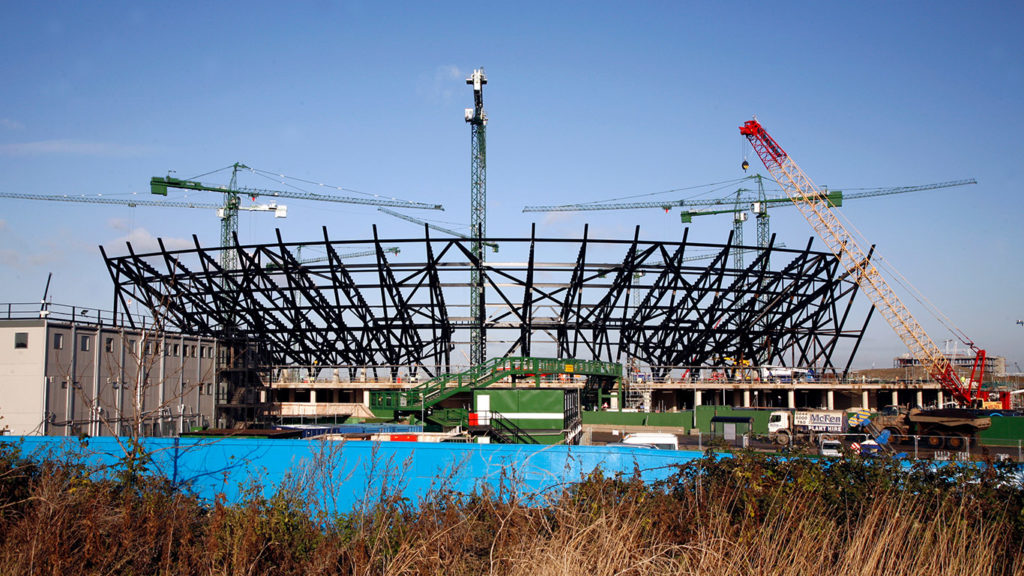
Established in 2006, the ODA (Olympic Delivery Authority) was the public body responsible for the construction of the new venues and infrastructure required for London 2012, setting a precedence for health & safety, as well as environmental management throughout.
Once the Games were confirmed, a two-year planning period ensued and objectives were established prior to the appointment of contractors. It is this clear outline of the project’s vision to which its success is accredited.
The concern for wellbeing was not just a gimmick for the Games; with thousands of workers involved in such a large-scale and high-profile project – and considering the safety ethos of the ODA – worker welfare was a high priority. Ensuring safe conditions and providing above average facilities means workers are better able to maintain productivity and effectiveness on site.
During construction, health & safety activities included the below:
– Each contractor was required to have a behavioural safety management system,
– All workers completed site and project inductions, and daily pre-work briefings,
– Minimum standards of competency were specified; it was a fundamental requirement that each worker should have a competence card, such as the Construction Skills Certification Scheme
– Site conditions were regularly monitored; HSL implemented the Safety Climate Tool to regularly survey site staff, the data collected meant initiatives could be developed specific to the results generated
Moreover, health & safety requirements applied at all levels. More than just top-down enforcement, all workers were empowered to take responsibility for site safety – including being encouraged to challenge any unsafe practices carried out by others.

However, consideration extended beyond site conditions, significant emphasis was given to the condition of the workers themselves with the provision of extensive wellbeing and welfare facilities such as:
– Pre-employment health checks, occupational health service and drop-in treatment centres
– Campaigns supporting wellbeing, such as heart health, obesity, diet etc
– Sustainably sourced food and a variety of catering facilities were provided to offer more choice that supported a quality diet, aimed at reducing the temptation to rely on takeaways and fast food.
Communication is a vital ingredient of coordination and efficiency on-site, not only as a means of preparation but also as a measure of success.
A high level of communication was evident throughout the London 2012 build, including health & safety briefings, regular review of planned works and progress updates of work to date.
A particular example of success can be found in the Velodrome, collaboration across all parties lead to a change to the design and construction of the roof. This resulted in reduced material usage, and equally installation time, plus improved health & safety conditions by limiting work at height as most of the construction could be done at ground level.
What helped maintain the momentum of success was the focus on the positive rather than simply highlighting the negative – instead of choosing to blame, successful change and other wins were celebrated using a variety of initiatives to encourage ongoing success. For example, one contractor issued a free breakfast for everyone each week that was free of an accident report.
As already mentioned, environmental policy and sustainability was one of the core pillars of the 2012 Olympics project, and was implemented throughout construction – in planning, material selection, and in processes:
– Compared to the stadium built for the 2008 Beijing Olympic Games, the Olympic Stadium used less than a quarter of the steel
– The Velodrome was built with 100% sustainably sourced timber
– Approximately 100% of operations waste was diverted from landfill, of which 62% was re-used, recycled or composted
– Where possible materials were transported by train or barge instead of via road to minimise carbon emissions
– When remediating the contaminated land, 80% of the soil was re-used, limited the need for transportation and reducing the need to purchase new materials

An exemplar project for construction, success was acknowledged in a number of ways.
The Athletes Village project achieved three Gold awards from the Considerate Constructors Scheme in 2010, 2011 and 2012; a scheme that supports positive impact in the construction industry regarding respecting the community, caring for the environment and valuing the workforce.
The Olympic Build reported an accident frequency rate lower than the overall industry average, and much lower than the construction industry average.
London 2012 were the first Olympic Games to be recognised for meeting BS 8901, the British standard for Sustainable Event Management; resulting in the development of a new international standard on sustainability (ISO 20121 – Sustainable Management System).